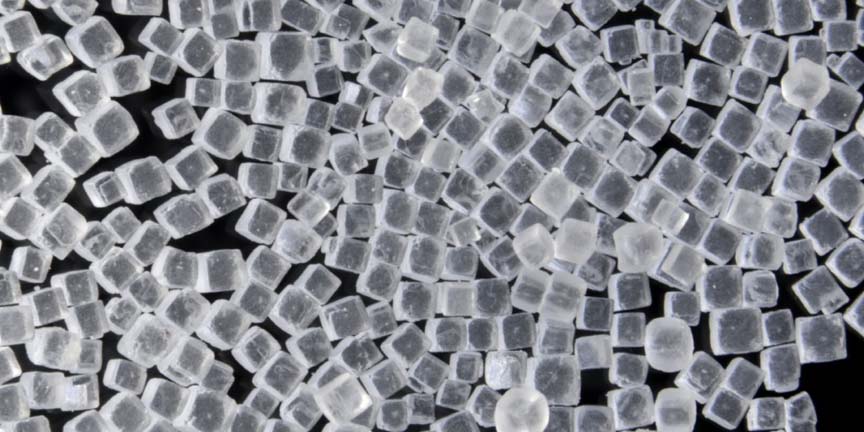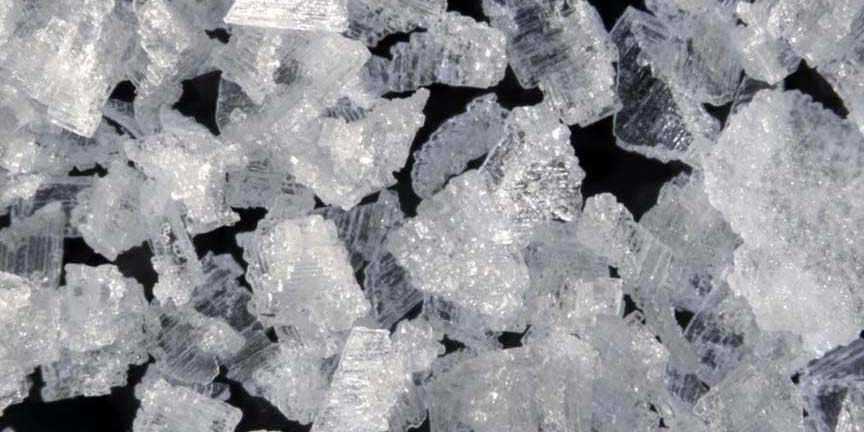
|
|
|
What's IotD? The interesting, amazing, or mind-boggling images of our days. |
|
IotD Stuff |
|
Permalink Latest Image |
|
|
|
Some folks who have noticed IotD
Neatorama |
|
Common image haunts
Astro Pic of the Day |
|
Advertising |
May 7th, 2017: Salt is Salt
Not the Strategic Arms Limitation Treaty or Slightly Alarming Lesion Testing, Salt, the mineral for popcorn.
Salt is common, so easy to get, and so cheap, it’s easy to forget before a hundred years ago it was one of the most wanted
and valuable commodities on earth. If De Beers hadn’t stepped in diamonds would have followed salt down.
|
There are three basic types of culinary salt: table, kosher, and sea salt. Table salt is crystallized into tiny cubes and often contains additives like potassium iodide and anticaking agents. Kosher salt is coarser and larger than table salt and was originally produced for the purposes of koshering meat under rabbinical supervision. Its irregular texture helps it cling to meat. Sea salt, which comes in a range of colors and textures, is made from seawater. It is often the largest, flakiest salt, containing the largest percentage of minerals and is best used as a finishing salt, sprinkled onto food just before serving. |

|
The Salt That We Cook With For most of us the term salt is synonymous with sodium chloride, but from a chemistry perspective, salt is a much broader term. Salts are ionic compounds that are electrically neutral—containing an equal number of positively and negatively charged ions. They are formed from the reaction of an acid and a base. A few other salts of interest include: Sodium bicarbonate: The ubiquitous chemical baking leavener more commonly known as baking soda. Lead acetate: A slightly sweet salt found in lead paint and responsible for lead poisoning. Monosodium glutamate (MSG): The salt form of glutamic acid, MSG provides the savory taste known as umami. Magnesium sulfate: Formed from the chemical reaction between magnesium hydroxide and sulfuric acid; better known as Epsom salts and often used as a laxative. Sodium citrate: Sodium citrate is a melting salt—a white powder that facilitates the melting of old cheeses. It makes possible marvelous melters like Velveeta and American cheese. |
Kosher Salt at 3.2x magnification.

|
In its pure form, all NaCl tastes the same, no matter where it comes from. And salt can come from two sources: seawater and underground deposits formed when ancient oceans dried up. What separates one salt from another in terms of flavor are the amount and variety of minerals (such as magnesium, calcium, and potassium) embedded in the sodium chloride. Sea salt may also contain marine bacteria. Salt’s size and texture, from perfect cubes to pyramid-shaped flakes, are determined by the method of processing. |
link
Snakeadelic Sunday May 7 08:51 AM
Sodium citrate: Sodium citrate is a melting salt—a white powder that facilitates the melting of old cheeses. It makes possible marvelous melters like Velveeta and American cheese.
It's also used to keep those little half-n-half portions at restaurants homogenized. And they put it in plasma and other blood products to inhibit clotting factors. It's also infused into the saline that Oregon decided all female plasma donors were required to receive after a donation--again, as a clotting inhibitor, because back when I was donating they centrifuged the blood and returned the red blood cells to the body after separating out the plasma. They eventually threatened to ban me from donating because the saline goes in at room temperature (about 70F), and since I'm tiny that means it did not warm up on its way to my heart. They thought I was convulsing or seizing when I kept explaining that if you dump a pint of 70-degree liquid into a vein less than 18 inches from the heart, the shivering is BAD until that junk warms up!
I never used restaurant half-n-half again after finding sodium citrate listed in the ingredients...
Snakeadelic Sunday May 7 09:02 AM
For some awesome viewing pleasures, I recommend the following image search strings:
Russian Salt Mine
This will get you pictures showing a mineral called carnallite, a hydrated potassium magnesium chloride, in bands with halides. The carnallite is vivid orange and yellow, while the halides tend to be white.
Salt Mine Cathedral
This will get you the very famous underground churches carved in Polish salt mines. Adding the word 'Colombia' to the search string shows images of a salt mine turned tourist attraction with both carving and lighting.
sexobon Sunday May 7 11:29 AM
Remember Lot's wife.
Diaphone Jim Sunday May 7 12:25 PM
3.2x?
xoxoxoBruce Sunday May 7 01:40 PM
Jim, that's what both pictures were labeled.
SFS_TableSalt_3.2x_magnification_1_6x_v3-001
and
SFS_DiamondSalt_3.2x_magnification_1_6x_v3-001
It looks more like 32x but I went with the tags.
sexobon Sunday May 7 01:51 PM
xoxoxoBruce Sunday May 7 02:03 PM
This is something I run into all the time, damn near daily. Do you trust what is written on the picture or about the picture? It's silly, but I agonize over some of these, while trying to be accurate. Sometimes I spend hours finding out, sometimes I go with gut feeling, but at 2:30 this morning I took the defensible position.
I didn't know that at the time, I believe it was more like... It's late, fuck it. 
sexobon Sunday May 7 02:20 PM
The photo was probably labeled with the 3.2X objective that was used, one of several different power objectives on the microscope turret, in conjunction with the standard 10X ocular (eyepiece) which gave an overall 32X magnification as captioned.
Diaphone Jim Sunday May 7 04:59 PM
Was not meant to be critical. I figured the error was at the source but worth pointing out.
xoxoxoBruce Sunday May 7 11:58 PM
No problem Jim, I welcome any corrections that make the OP more accurate or relevant.
I have a broads shoulders, just my luck to end up with the useless parts. 
Beest Monday May 8 10:14 AM
the much better way to do it is to include a scale bar as this is always true to the image, where as true magnification changes on how you are viewing the image
xoxoxoBruce Monday May 8 11:52 AM
I agree, everything's better when you add a bar. 
BigV Monday May 8 09:14 PM
glatt Friday May 12 11:59 AM
Microplastic pollution is also in sea salt.
According to this article in Nature, microplastic particles are known to be commonplace in seafood, and a new study has found them in sea salt as well. Typical rates in this study were are 0-10 particles found per kg of salt. The sample from France had zero. The sample from Malaysia had to be discarded because the high levels of dirt made looking for plastic too hard.
Gravdigr Saturday May 13 04:16 PM
|
The sample from Malaysia had to be discarded because the high levels of dirt made looking for plastic too hard.
|

SPUCK Tuesday May 16 03:33 AM
glatt!!! Ack, now I have to worry about that in my diet too. 
Need to go only for salt mine salt now.. Dang.
|
Your reply here?
The Cellar Image of the Day is just a section of a larger web community: a bunch of interesting folks talking about everything. Add your two cents to IotD by joining the Cellar. |
